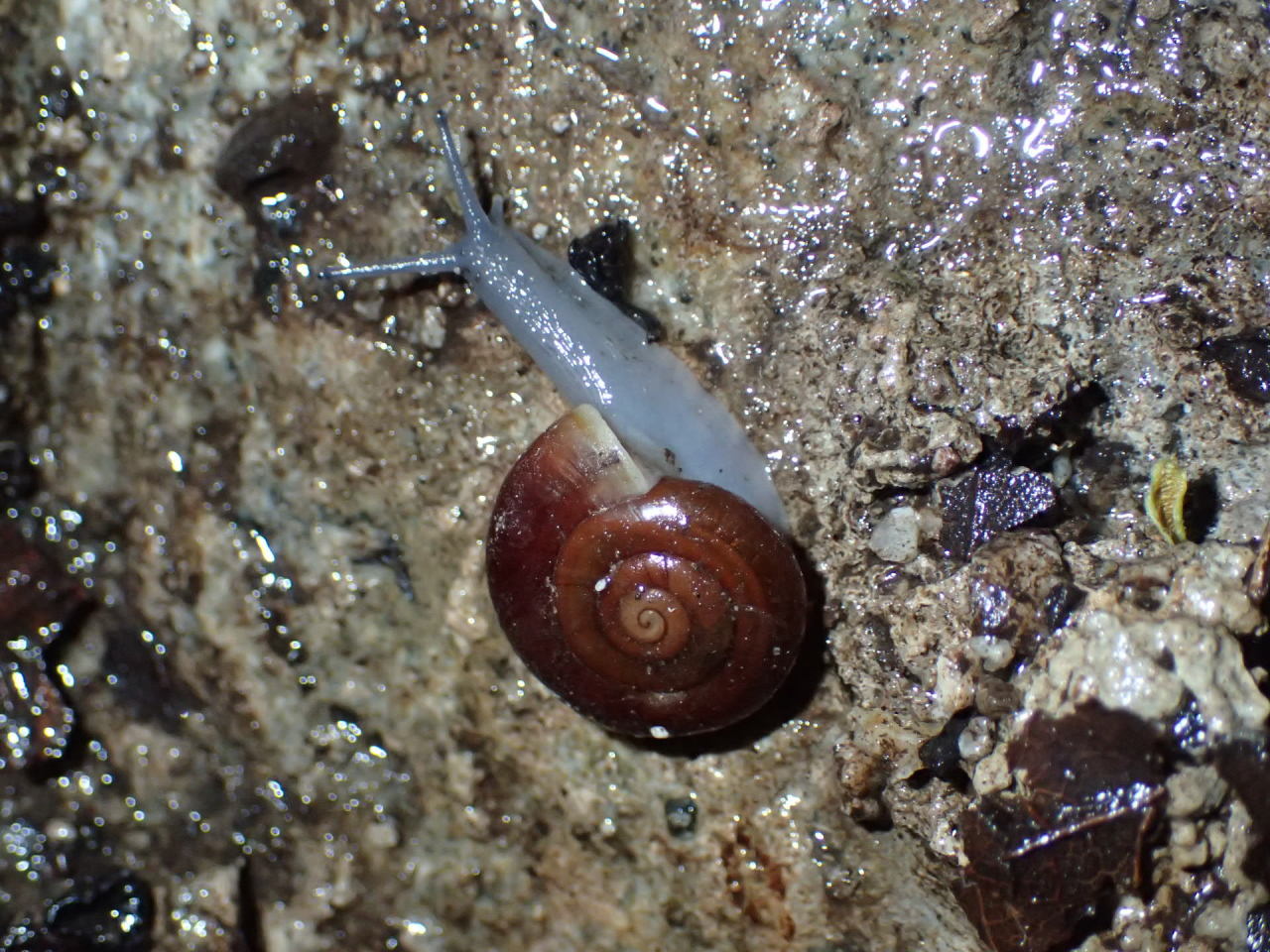Snails, SLIME, and Conservation - Oh My!

As Natural History Museum of Los Angeles County malacologist Dr. Jann Vendetti (@jannvendetti) says, a snail is “not a panda,” and not really the type of animal one traditionally builds a conservation campaign around, but that’s exactly what’s happening in Southern California right now. The Center for Biological Diversity has petitioned U.S. Fish and Wildlife to list the San Gabriel chestnut snail (Glyptostoma gabrielense - pictured above), which is listed as Imperiled Globally by NatureServe, as an Endangered Species. And because snails and slugs are sensitive to habitat change, Dr. Vendetti says the presence of endemic ones are good indicators, telling us their habitat likely holds many other native and endemic organisms.
As Dr. Vendetti explains in the interview below (which took place in May of 2017), iNaturalist observations (there are currently 43) are just about the only current range data we have for this animal - they were the first recorded sightings in about 70 years. Location data from iNaturalist is what’s being used in the Center for Biological Diversity’s petition - evidence for how critical citizen-based science can be.
These observations are part of the SLIME (Snails and slugs Living In Metropolitan Environments) project on iNaturalist, which was created by Dr. Vendetti and her colleagues to encourage documentation of mollusks in Southern California. One of the main contributors to SLIME is Museum Associate Cedric Lee (@cedric_lee), who has no doubt that “iNaturalist data is going to play a major role in science in the years to come.” Cedric, in fact, uploaded the first Glyptostoma gabrielense snail to iNat, which was identified by Dr. Vendetti. “At the time, I had no knowledge at all regarding snails in general,” he says. “That was a little over 2 years ago. Now, I'm known to some as the ‘snail and slug guy.’ It's surprising how much a single shell can change a person's life. Of course I have iNaturalist and its amazing mollusk community to thank for that.”
If you’ve uploaded a snail or slug observation to iNat, there’s a good chance either Cedric or Susan Hewitt (@susanhewitt) formerly invertzoo) added an identification or comment to it. Susan is a “serious amateur or semi-professional malacologist” and has contributed nearly 40,000 IDs to iNat already, as well as many helpful and encouraging comments to users, and is a great ambassador for these slimy invertebrates.
“Mollusks are something that most people don't know much about,” says Susan. “iNaturalist is in the process of changing that I think. Once people discover that someone can put a species ID on the snails, slugs and clams that they find, even if they are just some empty dead shells, then people become more interested in recording them. I see now that if someone is visiting a new area, they will go down onto the beach and not just photograph the birds that are there, but also look down and photograph the shells that have washed up on the sand, or mollusks alive on the rocks.”
As Susan notes, gastropods (snails and slugs) are second only to insects in the number of described species worldwide, and they have powerful effects on the ecosystems in which they reside, so “it is amazing how much excellent work citizen science can do in this respect,” she says. “I have been contributing to iNaturalist since 2014. I am always delighted to see that there are new records of mollusks for me to look at every single day, from all over the world.”
This story, I think, is a great example of how iNaturalist can effect real change, both policy-wise and in the lives of iNaturalist users. Researchers who are encouraging and engaging with amateurs can create a real community of dedicated naturalists, sometimes just through one tiny snail.
- by Tony Iwane. Photo by Cedric Lee, all rights reserved. Used with permission.
- Here’s another video interview with Dr. Vendetti, discussing SLIME.
- Last year a teen iNaturalist user (and her mom) in the San Francisco Bay Area made the first sighting of a nudibranch species (that is native to Asia) in the Eastern Pacific. Here’s our Observation of the Week write-up about the find and a published article about it.
- Susan Hewitt has a great guide for photographing mollusks on her profile page and she appears in a video about love darts.
- The San Gabriel Valley Tribune wrote an article about Glyptostoma gabrielense’s possible affect on a potential housing development. It also includes Cedric Lee’s footage of the snail.
- Check out our other blog posts featuring Dr. Vendetti’s colleagues at NHMLA, Dr. Greg Pauly and Miguel Ordeñana.





Comments
Yet another phenomenal video and journal entry! Such great stuff. :)
@benhutchins @beschwar
Thanks Sam. So many amazing stories of how people are using iNat in game-changing ways, it's been cool to share them.
From 43 obs then to ... 197 today!
Add a Comment